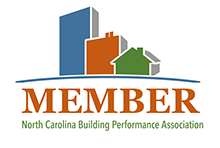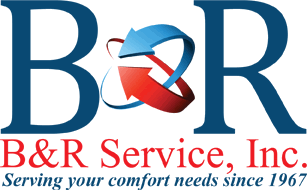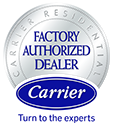Weatherization & Air Sealing

Air will leak through a building envelope that is not well sealed. This leakage of air decreases the comfort of a residence by allowing moisture, cold drafts, and unwanted noise to enter and may lower indoor air quality by allowing in dust and airborne pollutants. In addition, air leakage accounts for between 25 percent and 40 percent of the energy used for heating and cooling in a typical residence.
The amount of air leakage in a house depends on two factors. The first is the number and size of air leakage paths through the building envelope. These paths include joints between building materials, gaps around doors and windows, and penetrations for piping, wiring, and ducts. The second factor is the difference in air pressure between the inside and outside.
Air sealing the building envelope is one of the most critical features of an energy efficient home.
Benefits of Weatherization & Air Sealing

Improved comfort
A tighter building envelope reduces the amount of unconditioned air, drafts, noise, and moisture that enter your home. Proper air sealing will also minimize temperature differences between rooms. As a result, tight envelopes can maintain a more consistent level of comfort throughout a house.
Improved indoor air quality
A tighter building envelope reduces the infiltration of outdoor air pollutants, dust and radon as well as eliminating paths for insect infestation. Properly sealing the building envelope will also reduce moisture infiltration from outdoor air in humid climates.
Lower utility bills
Air leakage accounts for 25 percent to 40 percent of the energy used for heating and cooling and also reduces the effectiveness of other energy-efficiency measures such as increased insulation and high-performance windows. Thus, air sealing results in lower utility bills.
Fewer condensation problems
Condensation can lead to mold and mildew problems. In hot, humid climates, moisture can enter into wall cavities through exterior cracks and result in costly damage to framing and insulation. In cold climates, gaps in the interior walls allow moisture from warm indoor air to enter wall cavities and attics. This moisture can condense on cold surfaces and lead to structural damage. By significantly reducing air leakage, ENERGY STAR labeled homes can reduce or eliminate these problems.
Reduced obsolescence
Based on recent trends for improved efficiency and higher indoor air quality, tighter building envelopes are expected to become standard practice for the building industry. Since it is both difficult and costly to make the building envelope tighter after a house is constructed, it is best to seal all joints, holes and seams during construction. ENERGY STAR labeled homes constructed to exceed current building codes are therefore, expected to be less vulnerable to obsolescence.
Improved resale position
Air sealing a home can provide the many impressive benefits discussed above and lead to a more comfortable, quieter and better quality home with lower utility bills, fewer condensation problems, and reduced obsolescence.
Go Back

